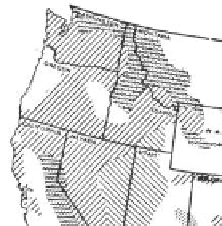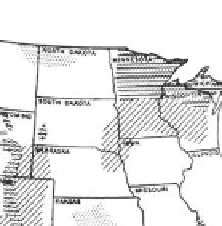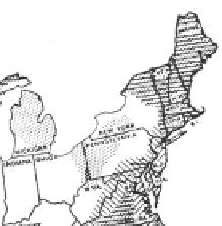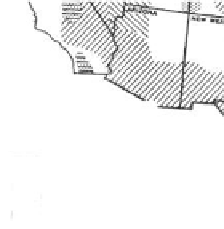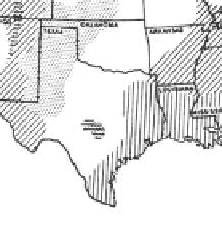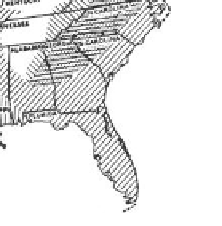Environmental Engineering Reference
In-Depth Information
temperatures at the turbine outlet would pose a significant icing risk for the
blades because of the large airflow through the turbine, despite the small
specific moisture content for air at high pressure. Another possibility is that
the turbine materials and seals may become brittle during low temperature
operation.
Adiabatic CAES designs capture the heat of compression in thermal energy
storage units. For example, assuming air recovered from storage at 20°C,
adiabatic expansion, and a 45× compression ratio, T = 174°C at the turbine
exhaust.
SuitableGeologiesforCAES
Geologies suitable for CAES storage reservoirs can be classified as salt, hard
rock, and porous rock. The total areas that have one or more of these geologies
account for a significant fraction of the continental United States (Figure 5.3).
Studies indicate that over 75% of the United States has geologic conditions
that are potentially favorable for underground air storage [34,35].
Salt domes-most favorable
for solution cavities
Salt beds-favorable for
solution or mined cavities
Sedimentary - favorable
for mined cavities and injection
in porous rocks
Granitic, plutonic - favorable
for cavities in hard rock
Sedimentary - injection in porous rocks
limited to favorable structure
Volcanic and sedimentary - not favorable
FIGURE 5.3
Areas classified for subsurface storage of fluids. (From National Petroleum Council Report of
Committee on Underground Storage for Petroleum, April 22, 1952; updated October 1962 by
C.T. Brandt. Bartlesville, OK; see Reference 19.)

